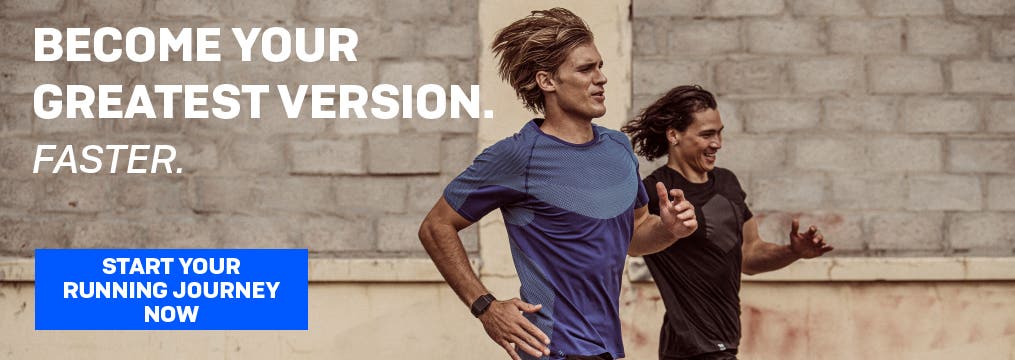Technology has changed the way we live, communicate and train. These days, you can track almost anything – calories, steps, training, drinking, sleep.. the list goes on. We're used to having endless information at our fingertips, even if we don’t actually do anything with it.
In a world full of training and running apps which collect mounds of data, Freeletics stands out. Because the truth is, you don’t need piles of meaningless data to become your most fit and confident self.
Heart rate, elevation, steps, calories, split pace. There are so many types of data that can be tracked during exercise. Some are more useful than others. But do you know what they all mean? Do you analyze them after your run? And most importantly, do you know how to use that information to improve your next workout? At the end of the day, what counts is how you perform, not how the graph looks. Here are some reasons why you won’t find certain types of data in the Freeletics app.
Distance covered in recovery breaks
Depending on which pace the Coach gives you for your workout, you may be jogging through your recovery breaks. The recovery breaks are for recovery, be that sitting, standing or jogging. It's not the overall distance that counts the most, but the quality of the intervals. Everyone should use the recovery breaks in such a way that they can run the next interval in its entirety at the recommended pace.
Elevation
This is a typical example of data which is interesting to know, but doesn’t give true value to many hobby athletes. It's useful for people training for a race with a lot of uphill and downhill slopes, who would be incorporating more hill sprints into their training. But some casual runners see elevation values as a challenge and want to collect as many meters as possible. But that isn’t the point.
The running workouts are not designed as hill sprints. Regardless of elevation, a “comfortable” distance run, or a workout run at a “moderate” or “fast” pace should still be run at those paces. Not faster, not slower. If you wanted to actively incorporate hills into your workout, you would have to know where each elevation begins and its values before you begin your run in order to know how fast to run up each one.
Heart rate
The choice to run by heart rate is a serious one. It requires professional tests to identify your heart rate zones and find your maximum heart rate or, even better, a lactate threshold test. But even these results are not infallible. Runners rarely have a personal trainer at their side and when it comes to heart rate, one size doesn’t really fit all. Athletes following a Running Training Journey should learn to listen to their bodies. They should concentrate on how they feel instead of constantly checking their smartphone for their heart rate. Training like this develops a better understanding of one’s body and its signals.
Calories
For athletes documenting their calorie intake or aiming for a calorie deficit, it can be useful to know how many calories they burn during a workout. But the number of calories burnt is not the amount you are “allowed” to fill up on again. This is a common notion, but one that should be avoided at all costs. Treating yourself to something unhealthy because you burned 250 calories during a workout defeats the whole object and won’t encourage weight loss. Typical calorie recommendations on food packaging are very general and your actual needs can vary depending on your level of activity, genes and even on small aspects such as body temperature.
Measurements of burned calories during activity are also not completely accurate. The real values can vary from person to person and training to training. We know that running burns many calories, and interval running even more so. But we don't include a calorie measurement because we don't want athletes to push themselves further than they should, just to burn more calories. If weight loss is your main goal with running, try out the Hybrid Running or Run & Burn Training Journeys as these are specifically designed to get you burning more, fast.
Let's recap:
Data is interesting, but it's not always relevant. The new Freeletics Running Training Journeys provides the structure you need to see fast, sustainable results. Less tracking, more training.
